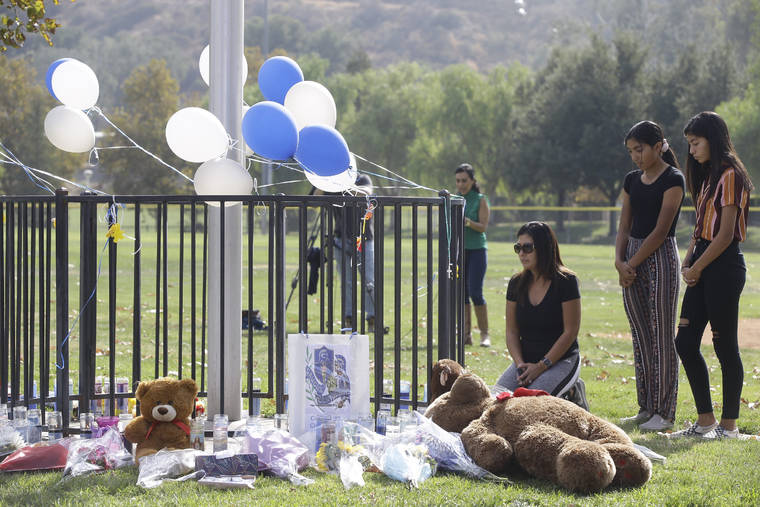It happened again on Thursday: Another sickening, heartbreaking school shooting that leaves us all reeling, looking for answers.
The teenage gunman, on the morning of his 16th birthday, opened fire on his school mates at Saugus High School in Santa Clarita, Calif., killing two and injuring three, before shooting himself in the head. Parents sent their kids off to school, and at least two babies never came back alive.
“With a heavy heart,” Los Angeles County Sheriff Alex Villanueva said: “I hate to have Saugus be added to the names of Columbine, Parkland, Sandy Hook, but it’s a reality that affects us all throughout the nation — something that we’re going to have to figure out.”
As of Friday afternoon, motive remained a huge mystery; so, too, was how the teen came to possess the .45-caliber handgun. Whatever details emerge are sure to reignite debate over gun control.
But just as tricky as restricting access to weapons, is detection of red-flag behaviors. Deepening the Saugus tragedy was the seeming normalcy of the shooter: quiet but smart, in classes ranging from engineering to Advanced Placement European history, with some friends plus a girlfriend, even a Boy Scout.
Back in simpler times, fire drills were the only emergency-response training that students learned. Sadly now, because of high-profile campus shootings in recent years, schools have added shooter-lockdown drills. We fervently hope that kids never have to use that drill in reality. But as this week showed — again, chillingly — any safety training can’t be ignored.

